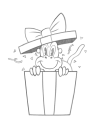Anatomy of the Human Body
Torso(163 Lessons )
The Basics
Spine
Pelvis
Rib Cage
Shoulder Bones
Intro to Muscles
Pecs & Breasts
Abs
Obliques
Torso Drawing
Shoulder Muscles
Lower Back Muscles
Upper Back Muscles
Neck Muscles
Arms(101 Lessons )
Legs(107 Lessons )
Newest
@nemuiyo
1yr
┐('~`;)┌
Jean Pierre Daviau
1yr
wonder if there is a ' map ' somewhere on the names for the bumps we see on the upper back of the male torso?
Jean Pierre Daviau
1yr
I think my naming is right
•
1yr
Backs are funny. I don’t know of any ‘maps’ for back anatomy, but one thing that helps me is to locate this triangle between the traps, lats, and scapula.
Its called the Triangle of Auscultation
The rhomboids are located beneath the traps and lats. Inside the triangle.
Manuel Rioja
2yr
Some of practice..
Marco Sordi
2yr
2023/11/9. Good morning everybody. Here’s another diagram about the shoulder’s rotation and protraction movements. Thanks.
Marco Sordi
2yr
2023/11/7. Good morning everybody. After completed Stan’s “Anatomy course” and finished Patrick Jones’s “The Anatomy of Style”, I’m here again to review all the lessons about the anatomy of the human body. It’s almost three years I’m studying drawing and now I feel I have a more solid knowledge about the structure of the body and how to draw the gesture. This make this anatomy review much more easy to understand and funny. Thanks.
Alexandra Filip
3yr
Hello there :) I found it easier to first lay in the muscles directly on top of Skelly, and then attempt to invent it. How can I improve my anatomical study drawings? Thanks :)
Tsotne Shonia
3yr
Here's my submission. I didn't include the traps or lat, so I show the supraspinatus and serratus even when they should be hidden.
@abrahan13
3yr
any feedback is appreciated
Ryan Gromek
4yr
Maria J Venegas-Spadafora
5yr
drawn from Skelly app. trying to add muscles from imagination. Would appreciate to hear if there is something off
parth kapadia
5yr
Give a gift
Give a gift card for art students to use on anything in the Proko store.
Or gift this course:

About instructor
Founder of Proko, artist and teacher of drawing, painting, and anatomy. I try to make my lessons fun and ultra packed with information.









